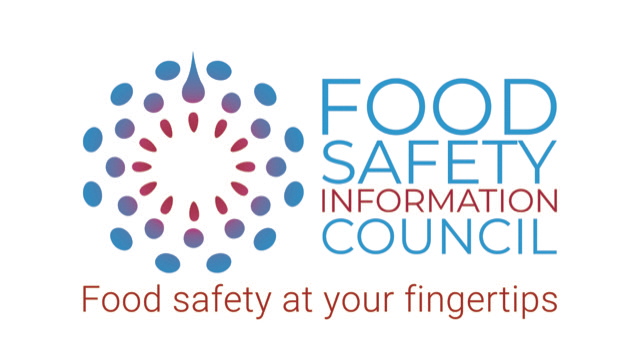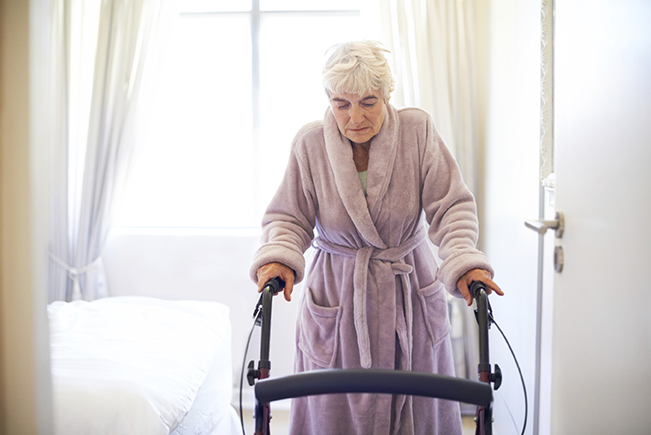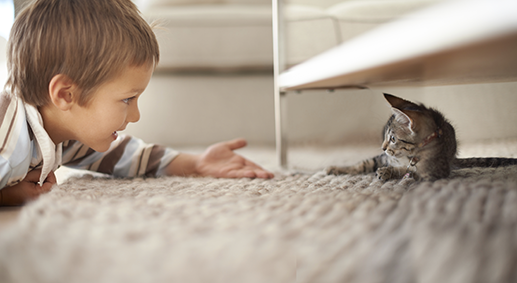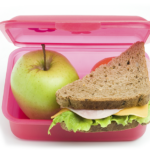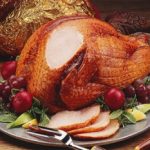Preparing food for the vulnerable
Aged care facilities
Aged care facilities and food safety when taking food for residents
It’s nice to show you care by cooking special favourite meals for a resident in aged care – perhaps culturally specific food or a family favourite which is not normally available in that facility. But if you do, you wouldn’t want to make them sick, so here are some things you need to know. This information may also be useful when preparing food for any elderly friend or relative.
Our immune system weakens as we get older. Also our stomachs produce less acid which makes it easier for harmful germs to get through our digestive system and invade out bodies.
If elderly people do get food poisoning, they are also likely to suffer more severe symptoms or consequences. These can range from mild dehydration to neuromuscular dysfunction or even death. Older people can also take longer to recover from food poisoning.
There are some foods that pose a higher risk than others, particularly of passing on a Listeria infection which is very dangerous for the elderly.
Check with the aged care facility
Before taking food check with the ages care facility as they have different rules about accepting or reheating food provided by friends and relatives. Also the elderly person may have special dietary requirements or restrictions about which you may be unaware so check with staff before providing any food to an elderly resident.
What are the higher risk foods?
Foods made with raw or minimally cooked egg such as home-made egg mayonnaise, hollandaise sauce, uncooked cakes and desserts and eggnog can be dangerous for the elderly and should not be provided.
Raw seafood such as oysters can be naturally contaminated with Vibrio species that are present in seawater. People with diminishing and poor immune systems can be highly susceptible and infections can result in death.
Some foods pose a higher risk than others, particularly in regard to Listeria infection which can be very dangerous to the elderly. These tend to be perishable foods that need to be refrigerated and that have been prepared well in advance and are eaten without further cooking. A list of these foods, and some safer alternatives is provided below.
Examples of food to avoid
| Food type | Examples |
| Cold meats | Cooked or uncooked, unpackaged or packaged sliced ready-to-eat eg roast beef, ham etc |
| Cold cooked chicken | Purchased whole, portions, sliced or diced and prepackaged chicken sandwiches |
| Paté | Refrigerated paté, liverwurst or meat spreads |
| Fruit and vegetables | Pre-prepared or pre-packaged fruit, vegetables or salads e.g. from salad bars, retails outlets etc. Frozen fruit and vegetables that are eaten raw without cooking eg berries, corn kernels. |
| Chilled seafood |
Raw or smoked ready-to-eat seafood e.g. oysters, smoked salmon or trout, sandwich fillings, mussels, sashimi or sushi and pre-cooked, peeled prawns such as in prawn cocktails, sandwich fillings, and prawn salads |
| Cheese | Pre-packaged and delicatessen soft, semi-soft and surface ripened cheeses e.g. brie, camembert, ricotta, feta and blue |
| Ice cream | Soft serve |
| Other dairy products
Tofu |
Unpasteurised dairy products (e.g. raw milk, raw milk cheeses and yoghurt made from raw milk)
Prepackaged and uncooked |
Safer alternatives
| Food type | Safer | Precautions | |
| Cold meats | Home cooked | Store in fridge and use within a day of cooking | |
| Chicken | Home cooked | Ensure chicken is cooked thoroughly to 75°C, use immediately – store any leftovers in fridge and use within a day of cooking | |
| Hot take-away chicken (whole, portions) | Use immediately or store any leftovers in fridge and use within a day of purchase | ||
| Salads | Freshly prepared salads – home made | Wash all vegetables and fruit thoroughly. Store any leftover prepared salads in fridge, use within a day of preparation | |
| Seafood | All freshly cooked seafood | Use immediately – store any leftovers in fridge and use within a day of cooking | |
| Cheese | Hard cheese (e.g. cheddar, tasty) | Store in fridge | |
| Processed cheese, cheese spreads, plain cream cheese, plain cottage cheese |
Purchase cheeses packaged by the manufacturer.
Store in the fridge |
||
| Other dairy products | Pasteurised dairy products (e.g. pasteurised milk, yoghurt, custard, dairy dessert) | Store in fridge, use by ‘use by’ date | |
| Packaged frozen ice cream | Maintain the ice cream frozen | ||
| Canned and similarly packaged foods | All | Store unused portions in fridge in clean, sealed containers and use within a day | |
| Tofu | Home cooked | Ensure tofu is cooked thoroughly to 75°C, use immediately – store any leftovers in fridge and use within a day of cooking | |
See this useful list of foods to avoid and alternatives from the NSW Food Authority.
Preparation
There are no special rules for cooking for elderly people – you just need to be even fussier than normal.
Follow these simple food hygiene basics to reduce the risk of foodborne disease:
- Thoroughly wash and dry your hands before preparing food, particularly before preparing ready-to-eat food.
- Keep your refrigerator clean and operate it at or below 5°C.
- Wash knives, cutting boards and kitchen appliances and dry thoroughly after handling raw food to prevent contamination of cooked and ready-to-eat foods.
- Thoroughly wash and dry raw fruit and vegetables before eating or juicing.
- Thaw ready-to-eat frozen food in the refrigerator or microwave – don’t thaw at room temperature.
- Thoroughly cook all minced meat products, rolled roasts and poultry to 75 °C.
- Don’t leave foods to cool on the bench or stove top. Divide into small portions and put them in the refrigerator as soon as they have stopped steaming.
- If you are keeping food hot, keep it very hot (60°C or hotter). Keep cold food cold (5°C or colder).
- Thoroughly reheat food until it is at least 75°C.
- Keep refrigerated foods covered.
- Store raw meat separately from cooked and ready-to-eat food in the refrigerator. Store it below other foods so that there is no chance it will drip onto other foods.
Transporting food
You need to ensure food is protected from contamination during transport. Perishable food should be kept at 5°C or cooler or, for hot food, at 60°C or hotter.
Between 5°C and 60°C is known as the temperature danger zone because harmful bacteria multiply to dangerous levels in perishable food when it is kept between these temperatures.
Put cold food in a cooler with ice packs when travelling to visit your relative or friend. Coolers can’t cool food, they can only keep cold food cool. Always cover preprepared foods securely and pre-chill the; for example in the refrigerator overnight. Other perishable foods and drinks must also be cold when put in the cooler.
Hot food is difficult to keep hot and is best avoided if you are travelling long distances. It is best to chill the food overnight and reheat it at the residence. If you must take hot food on a longer journey use an insulated jug or vacuum flask that has been preheated with boiling water before being filled with the steaming hot food. If you are unsure whether the insulated container will keep the food above 60°C, try filling it with water at 90°C, seal and test the water temperature after the length of time you expect your journey to take. If it is still above 60°C then you can use it. You will need a food thermometer to do this test.
If any perishable food you bring isn’t eaten immediately, make sure it is refrigerated before you leave.
Reheating food
Aged care homes have different rules about reheating food provided by friends or relatives.In some, staff will reheat the food; in others staff are not permitted to do so. In some facilities, the elderly person can reheat the food themselves; in others the person providing the food must do the reheating.
Check with staff about the rules at the home beforehand. Make sure they know that you have brought in food and ask them about re-heating it. Food needs to be reheated to a minimum of 75°C to kill most bacteria or viruses that can make people sick (some foods may be ruined at this temperature. Consider this in your food choice.).
Frozen food needs to be completely thawed before reheating. If you are reheating a commercially prepared frozen food, read and follow all the manufacturer’s instructions on the food label even if it looks precooked.
If you are reheating food in a microwave, you need to be careful that the food is heated evenly. Food heated in a microwave oven does not heat uniformly and unwanted germs may survive in portions of poorly heated food. Manufacturers recommend standing times to help alleviate the problem of uneven heating. Many microwaveable meal packs have an instruction to stir the food part way through the cooking process. Items such as lasagne that can’t be stirred should be allowed standing time to allow the whole product to reach a uniform temperature. How evenly the food will heat will also depend on the thickness of portions and on the composition and moisture content of the food.
Storage
When you bring food into an aged care facility for a relative or friend, it is you and not the staff who is responsible for its safety.
If some or all of any perishable food is not eaten immediately, tell the staff and ask them about storing the food in a refrigerator.
Some elderly people like to keep extra food in their rooms in drawers or bedside tables for eating later. While this is ok for shelf stable foods like biscuits and chocolates, it can be very risky with perishable food such as cold meats, seafood, custard or cream filled cakes, salads, cooked vegetables and meat dishes.
Leaving perishable food in the temperature danger zone (between 5°C and 60°C) for too long before eating can result in food borne illness. Food which can cause food poisoning may not look or taste spoiled.
If you bring an unopened package of commercially prepared food make sure the elderly person is aware of any ‘best before’ or ‘use by’ date on the food package and is able to make decisions about their safe use.
Things to remember:
- When you bring food into an aged care facility you are responsible for its safety.
- Strictly follow these Food safety tips.
- Carefully review the riskier foods for Listeria.
- Residents might have special dietary requirements or restrictions — check with the staff.
- Residents may no longer be able to make reliable decisions about food safety.
- Check with staff about the rules for the facility and food that’s brought in.
Download our printable Aged Care brochure here or order copies on this form
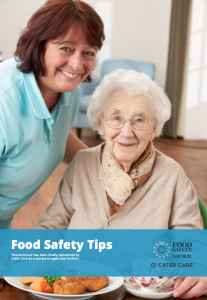
Indigenous communities
Infants and young children
Infants and young children under five years old are especially vulnerable to foodborne illness because their immune systems are not fully developed. Their stomachs also produce less acid making it easier for harmful germs to cause harm in their bodies.
There is detailed advice on infant and young children feeding on the National Health and Medical Research Council’s (NHMRC) website
Foods to avoid
The following foods should not be fed to young children because of their potential to cause serious foodborne illness:
- Raw or undercooked meat (particularly minced meat), poultry, fish and shellfish
- Raw seed sprouts—such as alfalfa, clover and radish
- Uncooked fermented meats, such as salami—check the label: ‘heat treated’ or ‘cooked’ products are safe. Do not feed young children products labelled ‘not heat treated’
- Unpasteurised milk and products made from unpasteurised milk—such as raw-milk, cheese and other dairy foods made from unpasteurised milk
- Unpasteurised fruit juices – except if you have freshly squeezed them yourself. Only buy such products from established reputable suppliers or squeeze the juice yourself. To determine if a juice is pasteurised, check the label or contact the manufacturer. All commercially freshly squeezed juices are unpasteurised.
- Honey do not feed honey to infants aged under 12 months because of the risk of botulism
- Raw eggs to prevent salmonella poisoning, cook all eggs thoroughly (i.e. until the white is completely set and yolk begins to thicken) and do not use uncooked products containing raw eggs such as home-made ice cream or mayonnaise.
- Hard, small, round and/or sticky solid foods are not recommended because they can cause choking and aspiration.
The NHMRC also recommends that infants and toddlers are always supervised during feeding and you should avoid feeding an infant using a ‘propped’ bottle which can increase the risk of choking, dental caries and ear infections.
Good hygiene
Before you prepare food wash your hands, rinse and dry them thoroughly. Make sure the food preparation area chopping board and utensils have been washed with hot soapy water and well rinsed and dried before use. Check out how to wash your hands properly.
Also start teaching your child good hygiene as soon as possible. Teach children to wash and dry hands before touching or eating food; after touching chicken or raw meat; after using the toilet; after blowing their nose and after playing with a pet. Teach children not to pick up food from the floor and eat it.
If you have gastro
If you have gastroenteritis, you don’t want to pass it on to the baby so, if possible, don’t prepare any solid food or formula yourself. Ask someone else to help or use commercially produced solid food in can or jar. Ask someone else to do the actual feeding if possible. Continuing to breastfeed is fine.
Sterilising bottles and equipment
All equipment, including bottles or cups, used to feed the baby must be sterilised before use, particularly in the first three months. Sterilising equipment and tablets for making sterilising solution are widely available and effective, provided manufacturers’ instructions are followed carefully. Sterilising solutions can be used for 24 hours before being changed. Equipment can also be sterilised by boiling it in water for five minutes.
All pieces of breast pumps should be washed with warm water and a mild detergent. If the pump has clear plastic tubing connected to an electric motor, check the manufacturer’s guidelines for washing and sterilising the tubing. Most such tubing needs to be washed and sterilised only if breast milk has accidentally been drawn up into it. The outside of the tubing should be wiped with a clean, moist cloth then dried with a towel or allowed to air dry.
Breast milk
Breastfeeding is strongly recommended where possible as it is has benefits for both mother and baby. Here are some tips if you express breast milk:
- milk can be expressed and placed in a sterile container with a lid
- expressed milk can be stored in a fridge for up to 48 hours
- frozen breast milk can be stored in a freezer for up to three months
- each time milk is expressed it should be stored in a different cleaned container, rather than being added to already stored expressed milk
- frozen milk should be thawed in the refrigerator or placed in its container in warm water and gradually heated until thawed. Leave the milk in the warm water only until it is thawed.
- heat the milk gradually to warm it by placing the bottle or other container of milk in hot water. Avoid overheating the milk as this can affect the immunological properties
- test the temperature of the milk before feeding the baby. Microwave ovens can cause variations in temperature throughout the milk. When testing the milk the temperature may feel correct, but the core may be sufficiently hot to scald the baby
- any partially consumed milk should be discarded.
If you use a breast pump follow its cleaning instructions to make sure the equipment is kept clean and safe.
Infant formula
Always check the date mark on the label and follow the instructions on the infant formula packaging for storage and preperation. Powdered formula should be prepared fresh each day. It can be stored in the fridge for a maximum of 24 hours.
Baby bottles containing formula or milk should be stored in the fridge and warmed up immediately before use by placing the bottle of milk in hot water. Heating the milk in a microwave oven can cause variations in temperature throughout the milk and burn young mouths. Test the temperature of the milk before feeding the baby. Any partially consumed milk or formula should be discarded immediately.
Solid food
Commercially prepared food
Read the labels carefully on commercially prepared food and follow any preparation or storage instructions and check the date marking on the labels. Listen for a popping sound when opening vacuum-sealed jars as this shows that the jar’s seal was intact and check pouch seals are intact. This is particularly important with commercial baby foods; if the jar fails to pop when opened or a screw cap or seam on a pouch are not intact, do not use the food. Swollen or leaking cans, pouches or jars indicate that harmful bacteria may have grown and their contents should not be eaten.
All commercially prepared foods, once opened, should be stored in the fridge, preferably not in the can id=f a canned product. Throw out the contents of any product if there is an unusual odour. Remove the amount of food to be fed immediately to a separate dish rather than feeding directly from the container, can or jar using a spoon or squeeze food in pouches onto a spoon or into a dish for the child to eat. This way, unused food from the container, can (transfer cans to a clean container), pouch or in a jar can be covered or recapped and refrigerated for later use without the risk of contamination. If you choose to allow the child to suck the contents from a pouch, do not recap and store a pack the child has had in their mouth. Throw out any unused food left in a serving dish and use a fresh clean spoon for every feed.
When transporting food for feeding your baby outside the home, keep any opened jars or pouches that need to be refrigerated, chilled by using ice packs. If using chilled or frozen commercial infant foods, only purchase such foods from established, reputable suppliers and that are within their use by dates and are appropriately stored in fridges and freezers. If home delivered, make sure you are home to receive the delivery, ensure it is chilled or frozen and within its use by date, and place in the refrigerator or freezer immediately. If you’ve bought chilled or frozen baby food at the supermarket, refrigerate/freeze as soon as you arrive home. Allowing the temperature of such foods to rise into the temperature danger zone for extended periods can allow harmful bacteria to grow.
Home prepared food
All general rules for safe food handling are especially vital when cooking for a young child so keep hot food steaming hot, keep cold food refrigerated, cook food properly, separate raw and ready to eat food, keep kitchen and utensils clean and wash hands with soap, rinse and dry thoroughly. Make sure you follow these Food safety tips to clean, cook, chill and separate.
If preparing food in bulk, cool it quickly by refrigerating. Don’t keep it in the fridge for more than about three days. When you make pureed vegetables or soup for your baby, you can make enough for several meals. Use a covered ice-cube tray to freeze small quantities which you can defrost one cube at a time for a single serving.
As with commercially produced baby food, keep home prepared food chilled by using an ice pack when transporting for feeding outside the home. Ensure any container, spoon etc is washed thoroughly with hot soapy water, rinsed well and thoroughly dried between one use and the next.
Fill food container with just enough food for one serving. Harmful germs from a baby’s mouth can be introduced into food or bottle where it can grow and multiply even after refrigerating and reheating. Throw away any leftovers. Do not feed any later meals from the same container or spoon.
Packed food for child care centre
Food can safely be made ahead of time (the previous night) provided it is then kept in the fridge. Ensure food preparation surfaces, hands and utensils are clean when preparing and packing the food. Wash all fruits and vegetables thoroughly. Food should be kept cool. Pack something cold such as a frozen drink or ice pack with the food. Pack perishable foods such as cold meats, chicken or egg sandwiches between the frozen items. Child care centres usually refrigerate food, especially for very young children. Placing food in an insulated bag into a day care refrigerator is not likely to add additional benefit over a couple of hours until morning tea or lunch and could take up valuable refrigerator space. Ask your older pre-school children to keep their lunch box away from heat sources such as direct sunlight or room radiators. Throw out any leftovers they may bring home. Warn children against sharing drink bottles.
Listeria advice
Listeria and pregnancy, the elderly and people with weakened immune systems
What is listeria?
Disease caused by Listeria infection is a comparatively rare form of foodborne illness, but it can be a very serious disease in:
- pregnant women and their unborn babies
- people who have diabetes, cancer or suppressed immune systems due to other chronic diseases such as leukaemia, HIV, diabetes, liver or kidney disease, cirrhosis or ulcerative colitis
- older people (generally considered to be over 65 to 70 years) depending on their state of health and especially if they have an underlying health issue like those above
- people taking a medicine that suppresses their immune system e.g. prednisone or cortisone
- organ transplant patients.
All these at risk groups for Listeria infection are advised to avoid the foods listed below. Listeria has also caused occasional outbreaks of mild gastroenteritis in healthy people.
If you’re not sure whether your condition or medication puts you in one of these at risk groups check with your GP on your next visit and follow this advice if you are. You can test your knowledge about Listeria by taking our quiz.
The symptoms of Listeria infection are mild and often are described as ‘flu-like’, although vomiting and diarrhoea can occur. If a pregnant woman is infected, it can lead to miscarriage, premature birth or the still birth of her baby even if she doesn’t show the symptoms. The time from infection to symptoms can be anywhere between 3 days and 3 months.
How to avoid Listeria infection
Listeria are bacteria that are widely found in the environment so most raw foods are likely to be contaminated. You don’t have to miss put on your favourite foods as Listeria is easily killed by cooking so, for example, you can easily add ham to a pizza, feta to a quiche or smoked salmon to fully cooked scrambled eggs. Just remember that cooked foods can easily become re-contaminated through poor food handling after cooking. For foods that can’t be cooked you can make other choices such as using fresh whole lettuce for salads rather than bagged lettuce.
If you are at risk of Listeria infection you need to avoid, or where possible cook, the following foods:
- Unpackaged ready to eat meats from delicatessen counters and sandwich bars; packaged, sliced ready-to-eat meats; cold cooked chicken purchased ready to eat, whole, diced or sliced and refrigerated paté or meat spreads
- All soft, semi soft and surface ripened cheeses e.g. brie, camembert, ricotta, feta and blue (pre-packaged and delicatessen), unpasteurised dairy products (e.g. raw milk or cheeses) and soft serve ice cream
- Pre-prepared or pre-packaged cut fruit and vegetable salads e.g. salads sold in bags or containers or from salad bars, shops or buffets, etc; pre-cut fruit and vegetables that will be eaten raw; frozen fruit or vegetables that may not be further cooked (e.g. berries, peas, sweet corn); rockmelon/cantaloupes (whole or cut); and bean or seed sprouts
- Raw seafood (e.g. oysters, sashimi or sushi); smoked ready-to-eat seafood; ready-to-eat peeled prawns (cooked) e.g. in prawn cocktails, sandwich fillings; and prawn or seafood salads; and seafood extender.
It’s important you maintain a healthy and varied diet if you are pregnant, elderly or immune compromised so we recommend you also talk to your GP or an accredited practicing dietitian about how to eat well while avoiding foods at risk of Listeria.
Also follow these food safety tips to reduce your risk of Listeria infection as well as other forms of food poisoning:
- Always wash your hands with soap and running water and dry thoroughly before handling food and keep food utensils and cooking areas clean
- Unlike most other food poisoning bacteria, Listeria can grow at refrigeration temperatures, so ready to eat food or leftovers should never be stored in the fridge for more than 24 hours. Since Listeria grows slowly in the fridge, it will do so only very slowly at cold temperatures so make sure your refrigerator is keeping your food at or less than 5°C.
- Avoid refrigerated foods that are past their ‘use by’ date
- Refrigerate leftovers promptly and use within 24 hours or freeze
- Always look for cooking and storage instructions on the food package label and follow them when provided.
- Cook high risk foods such as poultry, minced meat, sausages, hamburgers and leftovers to 75°C
- Cook egg dishes, such as quiche, to 72°C in the centre (or until the white is firm and the yolk thickens)
- cook frozen fruit and vegetables.
For more information about listeriosis see Healthdirect
Check this advice from our members Catercare’s Listeria-take it seriously brochure and Food Standards Australia New Zealand on making safer food choices and this useful list of foods to avoid and alternatives from the NSW Food Authority.
The Cancer Council has a range of useful publications for people with cancer, their family and friends
Transplant Australia has food safety advice for transplant recipients.
Watch these short videos about listeria
Toxoplasmosis advice
Toxoplasmosis advice for pregnant women and those with a weakened immune system
Toxoplasmosis is an infection caused by a parasite known as Toxoplasma gondii (T. gondii). This single-celled organism is commonly found throughout the world with cats playing an important role in its spread. The parasite forms egg-like structures called oocysts that can be found in the animal’s faeces.
People can become infected with the toxoplasmosis parasite through contact with infected animal faeces (poo).
Another way of catching this infection is touching or eating raw or undercooked lamb, pork or kangaroo meat. The parasites can be stored in small pockets (cysts) in the muscle tissue of these meats. Drinking contaminated unpasteurised milk can also cause infection with toxoplasmosis parasites.
Other practical ways to minimise the chance of infection include:
- Freeze meat for several days before cooking
- Peel or wash fruits and vegetables thoroughly before eating
- Wash cutting boards, dishes, counters, utensils, and hands with hot soapy water after contact with raw meat, poultry, seafood, or unwashed fruits or vegetables
- Avoid drinking untreated water.
Check out this advice from the Better Health Channel
